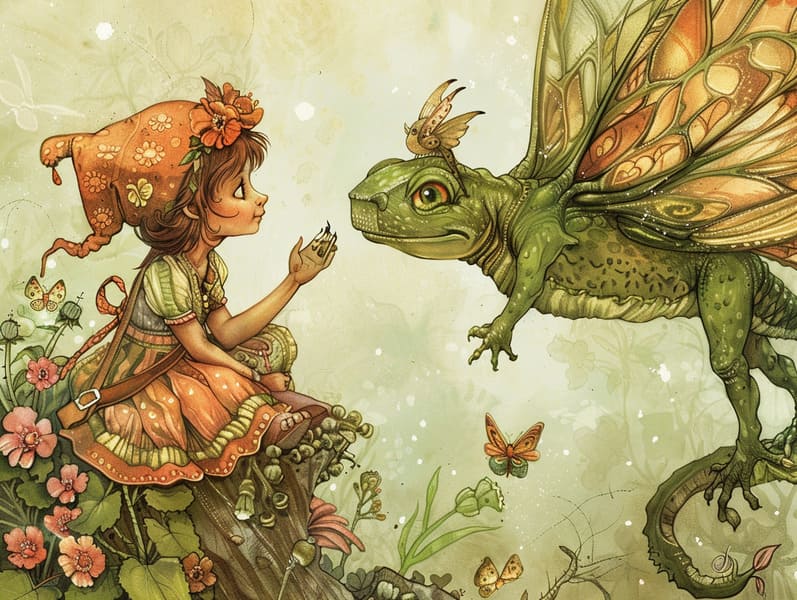The Evolution of Historical Fairy Tales and Their Lasting Majesty.
The Evolution of Historical Fairy Tales and Their Lasting Majesty.
Blog Article

Fairy tales have deep roots. These stories have been relayed from one generation to the next well before they were ever inscribed. They came from a variety of cultures, including Eastern traditions. They were initially told among grown-ups, often carrying themes and messages mirroring the societal norms and beliefs of the time.
The famous Grimm duo, Jacob and Wilhelm (the Grimm brothers), were among the first to gather many of these beloved stories. Their volume, "Grimm's Fables," included narratives like "Ashenputtel," "Hansel and Grethel," and "Little Snow White," which have since become hallmarks in the world of iconic fairy tales. Similarly, Hans Christian Andersen's magical fairy tales, such as "The Little Mermaid," and "The Duckling that Could," have touched hearts worldwide, ensuring their place in the pantheon of classic fairy tales.
Despite being ancient, fairy tales remain as impactful as ever, especially as bedtime stories for kids. These magical stories are now available in different formats, including colorful picture books, magical animations, and free fairy tales online.
Their ongoing significance can be linked to several enchanting factors:
Ethical Lessons: Timeless fairy tales often whisper important moral lessons. Tales like "The Shepherd Boy and the Wolf" teach the value of honesty, while "The Race of the Tortoise and the Hare" show the qualities of steadfastness and unassuming nature. These stories offer young readers clear distinctions between virtue and vice, forming their moral compass in a subtle yet meaningful way.
Sympathy and Perception: Old fairy tales frequently portray protagonists facing difficulties and adversities, stimulating children to connect with their struggles and encourage their triumphs. For instance, "Beauty and Her Beast" shows us the virtue of appreciating inner worth to recognize the inner self of a soul, building tenderness and appreciation.
Cultural Recognition: Many traditional fairy tales are deeply ingrained in the cultural contexts from which they bloomed. Reading these fairy tales can provide enlightening views into different cultures, encouraging a sense of cultural awareness and awareness.
Creativity and Fantasy: The whimsical elements in old fairy tales—mythical creatures—kindle children’s fantastical thinking. These narratives move readers to fantasy realms, boosting fantasy-filled thoughts and a sense of delight that endures a lifetime.
Timeless fairy tales are not only charming but also enlightening. They act as captivating tools in fostering various mental and emotional abilities in young ones. When traditional fairy tales are spoken out loud, they promote communication skills by offering new vocabulary and complicated sentence structures. This practice also boosts auditory skills and focus, as kids focus on every detail, anxious to see what happens next.
Furthermore, debating the themes and characters of timeless fairy tales can cultivate cognitive skills and logical thinking. Little ones are taught to pinpoint patterns, expect results, and understand cause and effect. These examinations also ease the young voice their thoughts and feelings, strengthening their emotional intelligence.
In today’s electronic age, the presence of web-based fairy tales has made these narratives more reachable than ever. Online resources and mobile apps supply vast collections of ancient fairy tales that can be viewed or played anytime, anywhere. Fairy tales read aloud are particularly liked, making available an interactive method for young ones to savor these enchanting tales. Narrated books and voiced videos take characters and settings to life, often supported by bewitching audio effects and songs that enrich the tale-telling adventure.
The persistent attraction of traditional fairy tales lies in their ability to change to modern days while sustaining their underlying messages. Contemporary retellings of these tales often feature more representative protagonists and modern settings, making them understandable to today’s audience. However, the key lessons of boldness, compassion, and equity remain unchanged, continuing to affect listeners of all ages.
Timeless fairy tales also offer a sense of warmth and predictability. They render a ordered narrative with a straightforward beginning, middle, and end, often closing with the resolution of conflicts and the triumph of virtue over vice. This predictability can be placating for kids, giving a sense of reliability in an fluctuating world.
Timeless fairy tales continue to bewitch and inform new generations, maintaining their magic and impact in modern society. As kids' bedtime tales, here they furnish a perfect blend of delight and instruction, furthering moral values, empathy, and creativity. The abundance of free fairy tales online and the popularity of fairy tales read out loud confirm that these ancient stories remain within reach to new generations.
By preserving and communicating these tales, we continue to celebrate the rich tapestry of narrative artistry and cultural heritage. Whether you are delving into a richly illustrated book, seeing a web-based library, or playing an voice book, the loveliness of ancient fairy tales is always within reach. These stories remind us of the invariable spell of stories and its ability to unite us across generations and cultures.
Even if you are delving into a gorgeously illustrated book, perusing a web collection, or hearing an read-aloud story, the appeal of popular fairy tales is always within reach.
These narratives remind us of the persistent essence of stories and its ability to link us across time and space, casting a charm that enchants and educates alike.